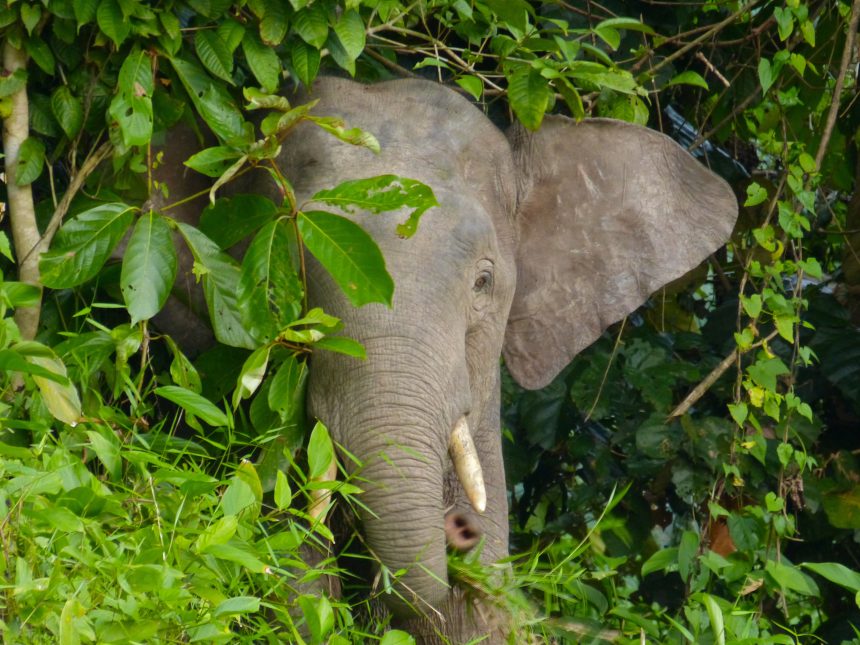A heartbreaking incident on Malaysia’s East-West Highway, where a mother elephant was seen grieving over her calf fatally struck by a lorry, has ignited nationwide calls for immediate and substantial wildlife protection measures. The tragedy, which unfolded on Mother’s Day, has not only stirred public emotion but also highlighted the pressing need for improved strategies to prevent such occurrences.
A Nation Mourns: The Incident That Shook Malaysia
In the early hours of May 11, a 10-tonne lorry collided with a young elephant on the Gerik-Jeli stretch of the East-West Highway, a known wildlife crossing zone. The calf was pinned beneath the vehicle, and its mother, in a desperate attempt to save her offspring, remained by its side, exhibiting signs of distress and refusing to leave. Wildlife officials later had to sedate the grieving mother to safely remove her from the scene.
The incident quickly went viral, with footage of the mother’s anguish circulating widely on social media platforms. Malaysians expressed profound sorrow and outrage, tagging government officials and demanding immediate action to prevent future tragedies.
Public Outcry and Demands for Action
The public’s reaction has been one of unified grief and a call for change. Social media users have urged authorities to implement concrete measures, such as constructing wildlife overpasses, installing speed bumps, and enforcing stricter speed limits in known wildlife crossing areas. Evelin Ruman, a concerned citizen, emphasized the need for dedicated wildlife crossings, while others highlighted the importance of driver awareness and education.
Lee Lam Thye, a prominent wildlife activist, stressed that these collisions not only result in the loss of precious wildlife but also pose significant risks to motorists. He advocated for the installation of motion sensors, rumble strips, and elevated crossings to mitigate such incidents.
Government Response: Promises and Plans
In response to the tragedy and subsequent public pressure, Natural Resources and Environmental Sustainability Minister Nik Nazmi Nik Ahmad acknowledged the incident as a stark reminder of the challenges in human-wildlife coexistence. He announced plans to establish a 10,000-hectare elephant sanctuary and emphasized the need for ecological corridors to facilitate safe wildlife movement.
The minister also highlighted the importance of federal-state collaboration, noting that key wildlife habitats fall under state jurisdiction. Since 2019, over RM800 million has been allocated to support forest conservation, with measures including the development of ecological corridors, elephant sanctuaries, and public awareness campaigns to reduce wildlife road fatalities.
The Broader Context: A Pattern of Tragedies
This incident is not isolated. Over the past five years, eight elephants have been killed in traffic collisions in Peninsular Malaysia, with three fatalities occurring this year alone. The Gerik-Jeli highway, which cuts through critical habitats like the Royal Belum State Park and Temengor Forest Reserve, has been identified as a hotspot for such incidents.
WWF-Malaysia has reiterated the urgent need for immediate and tangible measures to prevent further wildlife casualties. They advocate for the installation of speed bumps at key wildlife crossing points and commend ongoing efforts like the development of the Perak Elephant Sanctuary, expected to be completed by 2029.
Moving Forward: A Call to Action
The tragic death of the elephant calf has served as a wake-up call for Malaysia. It underscores the urgent need for enhanced wildlife protection measures, including infrastructure development, stricter enforcement of traffic regulations in wildlife zones, and increased public awareness. As the nation mourns, there is a collective hope that this incident will catalyze meaningful change to ensure the safety and preservation of Malaysia’s rich wildlife heritage.











